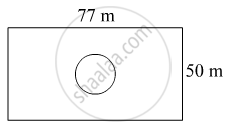Advertisements
Advertisements
Question
One card is drawn from a well shuffled deck of 52 cards. Find the probability of getting a spade
Solution
Total no. of possible outcomes = 52 (52 cards)
E ⟶ event of getting a spade
No. favourable outcomes = 13 {13 spades}
P(E), =`"No.of favorable outcomes"/"Total no.of possible outcomes"`
P(E) =13/52 =1/4
APPEARS IN
RELATED QUESTIONS
In a simultaneous throw of a pair of dice, find the probability of getting 8 as the sum
From a pack of 52 playing cards Jacks, queens, kings and aces of red colour are removed. From the remaining, a card is drawn at random. Find the probability that the card drawn is A black jack
The king, queen and jack of clubs are removed from a deck of 52 playing cards and the remaining cards are shuffled. A card is drawn from the remaining cards. Find the
probability of getting a card of heart
A box contains 150 bulbs out of which 15 are defective. It is not possible to just look at a bulb and tell whether or not it is defective. One bulb is taken out at random from this box. Calculate the probability that the bulb taken out is a defective one.
Length and breadth of a rectangular garden are 77 m and 50 m. There is a circular lake in the garden having diameter 14 m. Due to wind, a towel from a terrace on a nearby building fell into the garden. Then find the probability of the event that it fell in the lake.

In a game of chance, a spinning arrow comes to rest at one of the numbers 1, 2, 3, 4, 5, 6, 7, 8. All these are equally likely outcomes. Find the probability that it will rest at 8.

Which of the following cannot be the probability of an event?
A student says that if you throw a die, it will show up 1 or not 1. Therefore, the probability of getting 1 and the probability of getting ‘not 1’ each is equal to `1/2`. Is this correct? Give reasons.
Two dice are thrown simultaneously. What is the probability that the sum of the numbers appearing on the dice is a prime number?
In a lucky draw, there are 5 gifts and 25 blanks. The probability of getting a gift is ______.
